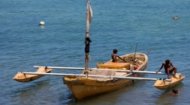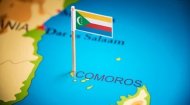|
|
|
Comoros Profile |
Comoros Profile |
Comoros Profile | Comoros Profile |
|
|

 The video explores what should have been an island paradise for tourists rather than a conflict zone, although recent settlements have provided some stability. The HDI (Human Development Index) is measured by the UNESCO Institute for Statistics (UIS) and the World Bank and is based upon the life expectancy, literacy, access to knowledge and living standards of a country. Comoros is in 152nd place out of 191 countries and territories in 2021. That's a rise though still low but above neighbouring Madagascar at 177th place and Tanzania in 167th place. The islands have a rich history with settlements there beginning as early as the 6th Century making up a population mainly of Bantu-speaking groups, Austronesians (including Malagasy), Arabs, Somalis, Portuguese, French, and Indians. Islam arrived during the 10th century, leaving a lasting impact on the culture and way of life. Before colonization, the Comoros had a system of sultanates and these sultanates operated based on hierarchical lineage membership and cyclic age systems. French colonial administration eventually replaced the sultanates, but Comorans still identify strongly with kinship and regional ties however today operates as a unitary presidential republic with the President of the Comoros serving as both the head of state and the head of government with executive power being exercised by the government and legislative power is vested in both the government and the parliament itself. The Comoros embraces a multi-party system, allowing various political parties to participate in the democratic process, making it one of only two "electoral democracies" in the Arab World along with Mauritania. |








